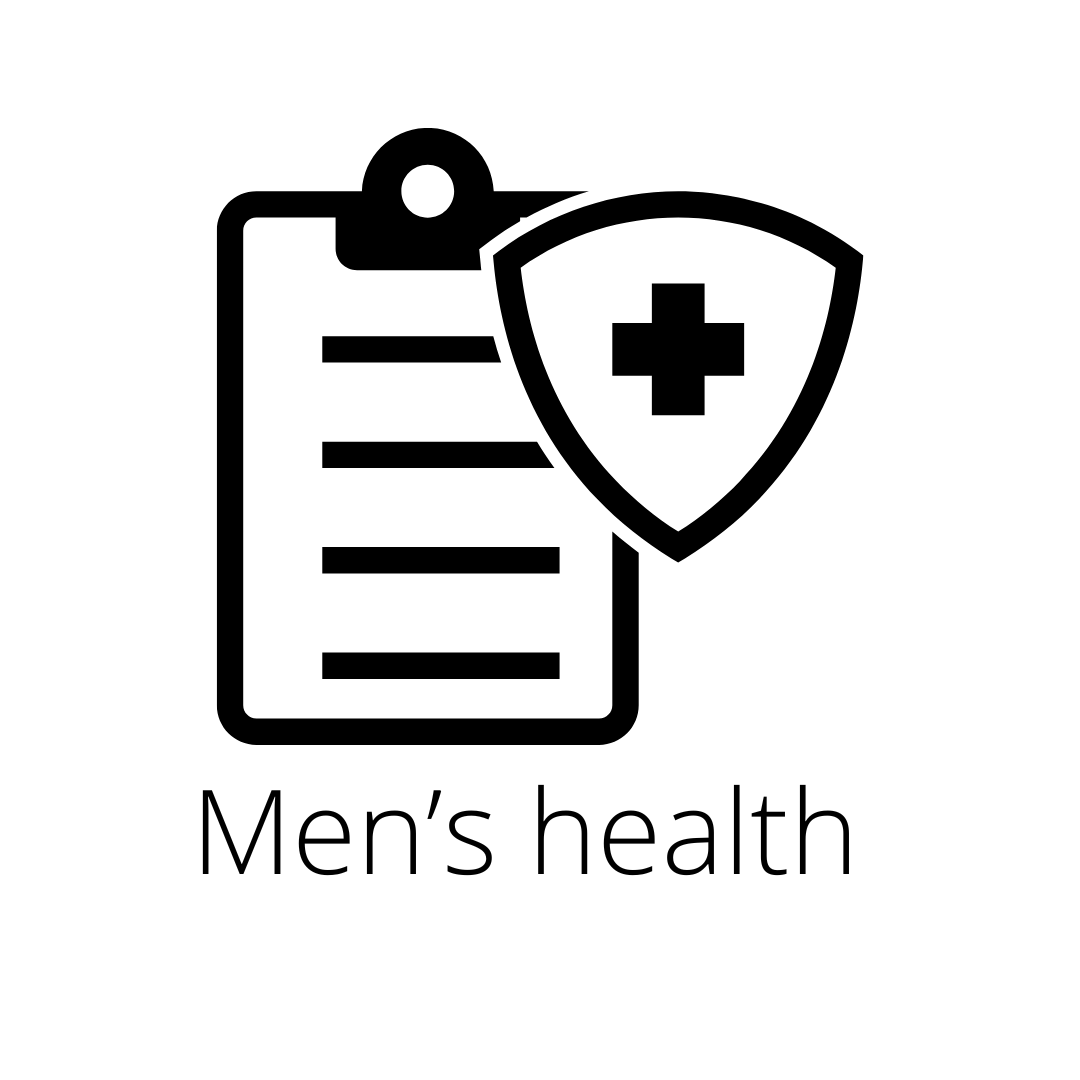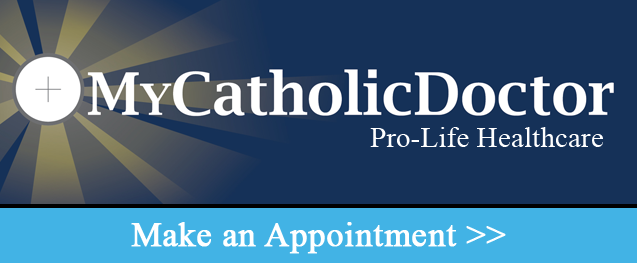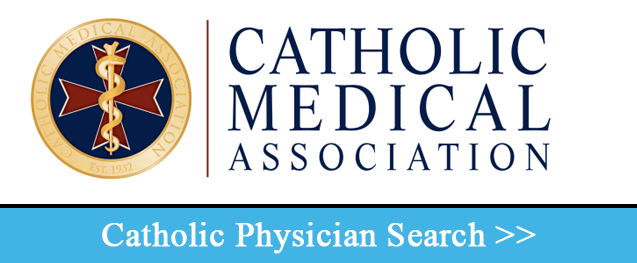
Vaginal and Oral Microbiomes
You have probably heard about the significance of the gut microbiome and its impact on different areas of health, but have you ever considered two other important microbiomes that are also closely linked to fertility and your health as a whole?
Both the oral and vaginal microbiomes are two often under-recognized but significant contributors to subfertility or infertility, and are also linked to outcomes during pregnancy and beyond, so supporting these areas is a must while trying to conceive and through pregnancy.
The oral microbiome: what it is and why it matters The oral microbiome refers to all the organisms in your mouth, including good and bad bacteria, viruses, and fungi. Over 700 different species of these live in your saliva, gums, and every inch of your mouth (1, 2). Far from being limited to only the well-being of your mouth, your oral microbiome community is closely linked to your immune system, cardiovascular health, and neural health (1). Oral health affects your whole body, and is not just contained to your mouth (3)! Many studies are also now recognizing the significance of oral health’s effects on other areas, such as fertility, pregnancy conditions, and long-term outcomes. So if you are currently trying to conceive or are already pregnant, it’s important to do everything you can to optimize this area of health (4). The oral microbiome affects both male and female fertility, so both spouses need to support oral health when trying to conceive. Here are some ways oral health impacts fertility and pregnancy: Supporting your oral microbiome during preconception and pregnancy: 1- Supercharge your oral routine: Floss (ideally with both thread and water flosser), brush, tongue-scrape, and then use mouthwash. Floss: A critical first step in any oral care routine, avoiding this habit has been associated with increased inflammation and incidence of bad bacteria in the mouth (16). If you’re not already, flossing at least once per day is recommended. Using a water flosser in addition to string floss can also be extremely helpful, especially if you have gum recession, deep pockets in your gums, or gum swelling. Brush: Use a soft or extra-toothbrush (harder bristles than this can lead to gum recession) or an electric toothbrush, such as Oral-B or Sonicare. For toothpaste, ideally use a remineralizing toothpaste, such as Elemental Silver tooth gel or GC MI Paste. These contain bioavailable calcium and with Elementa also containing a plant-based nanosilver (a biofilm disruptor that better or more accurately mimics our saliva, which works together to remineralize the enamel of your teeth), so using a paste with these helps maintain healthy teeth and can work to reverse the process of decay behind minor cavities as well (15). If you currently use nano-hydroxyapatite and have not had cavities recently, you can continue using this as a safe and effective option as well, but keep in mind that if you are more prone to cavities, it can be less effective for some people than a paste with bioavailable calcium for remineralizing your teeth (or reversing minor cavities). Just make sure you are using a quality nano-hydroxyapatite paste, like Fygg paste (ideal because it contains xylitol as a biofilm disruptor). Tongue scrape: Helps remove bacteria and plaque on your tongue (especially bacteria that may have built up overnight). Studies have found tongue scraping 1-2 times per day significantly improves the tongue bacterial composition and microbiome (17). Tongue scrape each time you brush your teeth. Use a Nano Silver Mouth Rinse: If you are cavity-prone or recently have been dealing with other oral health issues, nanosilver mouth rinse is a must! Unlike other rinses that kill off good along with the bad bacteria in your mouth, nanosilver supplies your teeth with calcium in a plant-based coating that can break through the biofilm and support teeth remineralization (18,19). Elementa nanosilver rinse in particular is effective, as it contains plant-based nanosilver to break through your biofilm with calcium to remineralize your teeth. Support your oral microbiome between meals: Xylitol is a plant-based sugar and prebiotic, meaning it feeds the good bacteria in your mouth while inhibiting cavity-causing bacteria growth (by starving them), helps stimulate salivary flow, reduces acid that increases decay and cavity risk and disrupts unwanted bacteria biofilms (20). Xylitol also has benefits beyond dental health and cavity prevention, such as antimicrobial activity, supporting your immune system, and bone health (21). It can also be used as a low-glycemic sweetener in baked goods to support better blood sugar stability- another key foundation for overall health and especially fertility and a healthy pregnancy. Try chewing xylitol gum or mints after every meal, especially foods and drinks that are acidic. Studies of xylitol have found that consuming it habitually in the form of chewing gum or mints reduces the risk for cavities by 70% or more (22, 23)! You can also use an oral xylitol spray after or between meals, as well as any time you feel your mouth might be dry. (Side note to those with pets: Xylitol is safe and beneficial for humans, but deadly to dogs, so keep all xylitol products away from them) 2- See a dentist (ideally, a biological or biomimetic dentist) at least once during pregnancy (and in general, at least every 6 months). While a conventional dentist tends to focus on oral health as a separate area, a biological or holistic dentist recognizes the importance of a whole-person approach in addressing oral health and a root-cause approach to issues like cavities. This means that they will address root contributing factors for oral health (such as nutrition, lifestyle, and your breathing/airway), use safer materials when working on your mouth (no mercury or amalgam fillings, along with other more natural materials) to minimize your toxin load and utilize complementary therapies such as ozone therapy, instead of just treating issues after they occur. Find a biological dentist in your area here. A biomimetic dentist is especially focused on preserving as much of your teeth as possible, restoring the function of natural teeth, and using materials that more similarly mimic our biological ones in the mouth. Find a biomimetic dentist in your area here. (Note: these are harder to find, higher in demand, and may require travel- but they can be especially important to see if you are dealing with oral issues such as cavities or have a history of oral issues) 3- Eat to support oral health. Key nutrients and minerals for oral health There are many micronutrients that not only support your oral health but your baby’s oral health and microbiome, as well as his or her tooth development. Some of these include: –Calcium: Essential for bone structure and support and protecting the integrity of your teeth and the enamel. Low calcium intake is a risk for periodontal (gum) disease, and is important to have adequate amounts of in your saliva to remineralize your teeth (24, 25). Good sources of calcium include dairy, canned fish with bones, cooked leafy greens, and chia seeds. –Vitamin D: Works with calcium to utilize calcium and maximize absorption (26). Vitamin D is best obtained from at least 15+ minutes of daily sun exposure (during peak sunlight, though more is needed at less intense times of the year and if you have darker skin). You can also get some in smaller amounts from fatty fish and mushrooms. –Potassium: Neutralizes acids in the mouth that contribute to cavity formation, and reduces the amount of calcium lost from bones, which supports bone mineral density. (27). Inadequate potassium intake can increase the risk of tooth loss (28). Potassium-rich foods include apricots, lentils, prunes, squash, potatoes, milk, spinach, chicken, and salmon. –Phosphorus: About 85% of the phosphorus in your body is stored in bones and teeth, where it helps make them strong (29). Phosphorus is also a component of hydroxyapatite, the main structural component of bones and tooth enamel (30). Good sources of phosphorus include milk, cheese, yogurt, salmon, scallops, chicken, and beef. –Vitamin K2: Works with Vitamin D to strengthen bones and teeth and increase bone density (31). Vitamin K (in its most bioavailable form as vitamin K2) is best sourced from liver and other organ meats, full-fat dairy, egg yolks, beef, and fermented foods. –Vitamin C: Vitamin C synthesizes collagen, an important protein for tooth structure, support, and maintenance (32). Low levels of Vitamin C are associated with tooth decay, gum bleeding, and periodontal disease (33). Vitamin C-rich foods include citrus (take with meals and counteract with brushing, xylitol, or alkaline water after consuming), broccoli, bell peppers, cauliflower, and kale. –Vitamin B12: Important for maintaining bone density, and is inversely associated with periodontal progression and risk of tooth loss (34). Foods rich in vitamin B12 include organ meats, clams and oysters, sardines, tuna, rainbow trout, salmon, and beef –Vitamin A (as retinol): Retinol, the active form of vitamin A, supports moist mucous membranes and immunity. Low vitamin A intake is associated with reduced oral development, impaired tooth formation, enamel defects, and periodontal disease (35). Vitamin A (in its bioavailable form of retinol) can be found in beef liver (the best source), as well as much smaller amounts in herring, cheese, eggs, and salmon. –Arginine: Found in protein-rich foods, especially red meat, seafood, poultry, and dairy, arginine is a prebiotic that feeds the good bacteria in the mouth, increases the pH in your mouth, and removes biofilms (36). (Note: Though many studies focus on excessive vitamin A intake as impairing bone health, this is not likely to be an issue if you’re consuming it from whole food sources and when incorporating liver, only consuming 3-6 ounces per week.) Specific foods that do and don’t support oral health: You can also take a dental probiotic in supplement form if you wish, especially if you are struggling with cavities. *minimal effect in contributing to cavity or biofilm formation (making them more ideal cavity-fighting foods or for choosing as snacks) Foods to be cautious about for better oral health: Does this mean you should limit your consumption of all of these? For whole foods- absolutely not! Just be conscious of the way and time you consume them. For example, it’s best to avoid sipping on acidic beverages throughout the day or for multiple hours, as it will expose your teeth to acid and erosion for a longer period of time. Instead, aim to consume an acidic beverage in a much shorter window of time or with a meal, and follow it up with xylitol to increase the pH of your mouth again. For acidic foods like fruits, follow this same principle- ideally, consume with a main meal, and if you do have them as part of a snack, counteract them with xylitol immediately after (44). In general, try to stick to 3 meals per day and avoid all-day grazing, but if you do need to snack, replace acidic snack foods with foods that better support oral health (see list above) and sip on alkaline water, plain or seltzer water instead of flavored or other acidic beverages. Other non-negotiables for supporting your oral microbiome Having a hydrated mouth is one key way to naturally increase your saliva, which is critical for cavity prevention (45). Aim to drink a minimum of 64 oz daily if you are trying to conceive, ideally including one with electrolytes (just a ½ tsp of salt and cream of tartar is a helpful boost for your cells to better absorb water). If you’re currently pregnant, aim for 100 oz of water per day, and at least 130 oz daily if breastfeeding. 2. Use nasal spray, nasal strips, and/or mouth tape to promote nasal breathing If you are in the 30-50% or more of the population who is a chronic mouth-breather at night, nasal spray can help (46, 47, 48)! Use it after you complete your oral care routine in the evenings to help open up your nasal passages. How do you know if you’re a mouth breather? Symptoms include (49): But why does nasal breathing matter so much for microbiome health? Nasal breathing promotes better oxygen flow through your body (and therefore to your baby), can improve sleep quality, and supports a balanced oral microbiome since a dry mouth (dried out through mouth breathing) becomes a breeding ground for bacteria. In contrast, saliva and a moist mouth help keep bacteria balanced (50, 51)! For both males and females, sleep-disordered breathing and sleep apnea increase the risk for infertility, with one study even finding that sleep-disordered breathing of any severity was associated with a 77% lower likelihood of pregnancy and live birth rates (52, 53, 54, 55). And not only does mouth breathing impact oral health and fertility, but prolonged oral breathing can also cause physical changes such as an imbalance of craniofacial muscle activity and deformation of head posture produced by positional changes of the tongue, lips, and mandible (56). (Good news if you are a mouth breather though- these issues can be improved and reversed with myofunctional therapy, among others) Using mouth tape, nasal strips, or nasal spray at night: If you know you are a mouth breather, you could benefit from using one of these strategies to prevent mouth breathing. Mouth taping supports all the benefits of nasal breathing by helping your body learn to prefer that airway. You can reuse one strip of mouth tape for a few nights. (Note: If there is a possibility you have sleep apnea or TMJ issues, do not start mouth taping until you talk to your provider first) You can also use nasal strips as another alternative to help you breathe better at night as well. If you believe you have mouth breathing issues, sleep apnea, or other issues related to jaw misalignment, myofunctional therapy is highly recommended! See more here or ask your dentist if he or she can recommend one to you. 3. Counteract acid with xylitol or alkaline water anytime after consuming snacks, sugary foods, or acidic foods and beverages (especially vinegar, citrus, or coffee). As mentioned above, xylitol is key for decreasing the amount of acid-producing bacteria in the mouth, as well as bacteria adhesion to teeth (57). So it’s ideal to consume xylitol-containing mints, gum, ½ tsp of xylitol in water, or alkaline water, which are all ways to help re-alkalize the mouth and promote remineralization. Keep a pack of xylitol mints, gum, or alkaline water with you when eating on the go! 4. Get old dental work assessed by a biological or biomimetic dentist If you have mercury or amalgam fillings or an old root canal, these can all negatively impact fertility and pregnancy. How is that possible? Root canals can become infected, leading to systemic inflammation (and many different symptoms) throughout the body. For some people, fillings can cause symptoms and issues associated with heavy metal toxicity (58). Both systemic inflammation and heavy metal toxicity, in addition to causing many other health issues, can cause suboptimal fertility and, in pregnancy, cross the placenta and cause numerous developmental and neurological issues (59, 60). A biological or biomimetic dentist can assess if these impact your health during this time and remove them if necessary. What the vaginal microbiome is and why it matters for fertility and pregnancy: The vaginal microbiome is the ecosystem of microorganisms, including bacteria and fungi, that live inside the vagina. However, this microbiome undergoes drastic changes during pregnancy, to become less diverse and higher in lactobacillus strains in order to support immunity against pathogens during pregnancy. These changes can last up to a year postpartum (61, 62). Like the oral microbiome, recent research is also showing us the importance of the vaginal microbiome and its role in female health beyond the vagina. During pregnancy, your vaginal microbiome adjusts to support the health of you and your baby by becoming dominant in the beneficial bacteria called Lactobacillus to help protect you and your baby against infection (63). Many studies have found that imbalances in the vaginal microbiome are associated with a higher risk of reduced fertility, pregnancy complications such as miscarriage, preterm labor or birth, and preeclampsia (64, 65). One study specifically found that not having enough lactobacillus in the vaginal microbiome was associated with a significantly higher prevalence of miscarriage and pro-inflammatory cytokine levels, compared to the vaginal microbiomes of healthy pregnancies carried to term (66). Adequate lactobacillus in the vaginal microbiome has also been found to appear effective for preventing GBS (group B strep) colonization during pregnancy (67). For subfertility, the often overlooked vaginal microbiome has recently become an exciting new target area of assessment (68). If you have been trying to conceive for some time, this is a worthwhile area to explore. Seek out a functional practitioner who can use tests to assess if this may be a contributing factor to reduced fertility in your case. Supporting vaginal microbiome health during preconception or pregnancy The basics of supporting a healthy vaginal microbiome include: Specific strains for vaginal microbiome health include lactobacillus acidophilus, which helps establish and maintain vaginal balance, as well as lactobacillus rhamnosus and lactobacillus reuteri (69, 70). These help create a strong mucosal barrier and fight pathogens (71). Lactobacilli also produce lactic acid and hydrogen peroxide that help maintain the vagina’s acidic pH (below 4.5) and produce anti-microbial and anti-inflammatory compounds (72). Because taking strains at random in supplement form can run the risk of contributing further to microbiome imbalance, it’s ideal and safest to get these probiotics from whole food rather than supplements. Yogurt and fermented foods are the best food sources of probiotic strains for vaginal health. In addition to getting them from the diet, it might be necessary to take a supplemental probiotic if you already have microbiome imbalances and overgrowth to help support the regrowth of specific beneficial strains. However, it is not recommended that you self-diagnose or randomly take probiotics in supplemental form without a practitioner. 2. Eat to support blood sugar stability: Studies that have observed the growth of bacteria species in the vaginal microbiome have observed unwanted species can overgrow and overpopulate in the presence of glucose, and especially with higher glucose levels (73). In both the oral and vaginal microbiomes, high glucose intake is associated with creating a more favorable environment for fungus, aka candida, to overgrow, which then creates what is commonly referred to as a “yeast infection” (74). Candida can become overgrown in either the mouth or vaginal microbiomes-so if you are dealing with candida in your gut, see above for supporting your oral microbiome as well! If you’re trying to maintain a balanced microbiome, maintaining stable blood sugar levels is key! Limit glucose spikes by: It’s recommended that you see a functional practitioner, if you’re dealing with recurrent yeast infections, who can help you get to the root issues of your overgrowth. There are often multiple diet, health, and lifestyle factors that can contribute to it. 3. Stay hydrated Not only is staying hydrated important to support more optimal fertility during preconception and pregnancy in general, but it also helps keep your vagina lubricated, while dehydration contributes to vaginal dryness (75). Why does vaginal dryness matter? It increases the risk of infections and bacterial overgrowth, such as candida (75). Remember to aim for 64-90 ounces of water daily during preconception and 100 ounces daily during pregnancy, and to support hydration on a cellular level (ie, ensure your cells are actually absorbing the water instead of excreting it all), make sure you’re drinking water with added electrolytes once daily (either in a pre mixed packet or DIY recipe). Other ways to support your vaginal microbiome health include: Vaginal microbiome testing can therefore be a helpful and necessary piece of the puzzle in some cases when trying to find contributors to reduced fertility or a diagnosis of “unknown” infertility. Note: there are many tests available, and it’s not recommended that you do one without working with an experienced fertility practitioner who can guide you through testing, results, and an appropriate protocol. Functional nutritionist & licensed dietitian Claire Gilmore is a Certified Nutrition Specialist (CNS) and Licensed Dietitian Nutritionist (LDN) with a master’s in clinical nutrition, but her favorite title is mom (to two precious girls). Oral Microbiome
Vaginal Microbiome

Claire Gilmore, CNS, LDN










